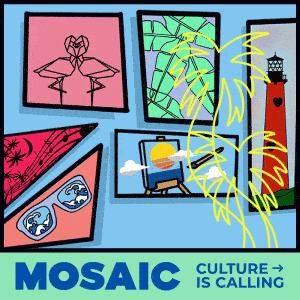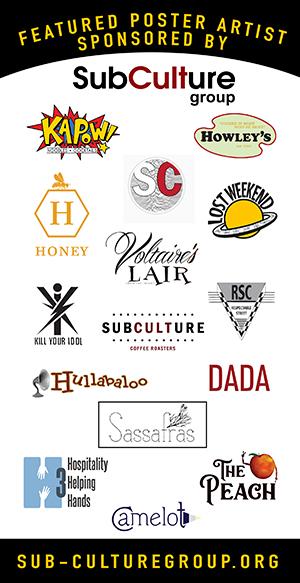
Shane Drinkwater
Modern design seems to demand that artists make a hard binary choice: minimalism or maximalism? Are you drawn to simple lines and color palettes or do you find yourself dreaming in textures, patterns and shapes? It’s a lively debate with no perfect resolution, and for this month’s PureHoney featured artist, Shane Drinkwater, the answer is a little bit of both.
Born on the Australian island of Tasmania, Drinkwater says he takes inspiration from the “heavens and earth” to create his work. He developed his passion for drawing at age 5 and spent most of his school years in the art department (to the detriment of his other studies), and he enrolled in art classes outside of school. Practicing painting, and for a short while sculpture, he was inspired by artists Antoni Tàpies (for textures), Odilon Redon (for emotions), and Colin McCahon (for incorporating text into his work).
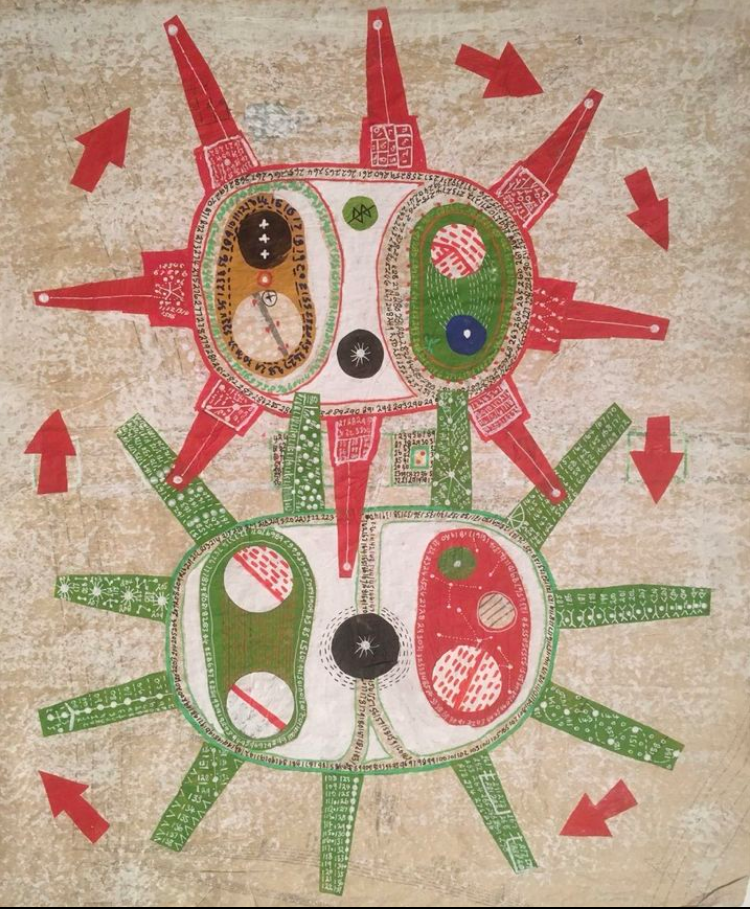 Even with such strong influences, Drinkwater has forged his own path in developing an art form that combines elements of these masters as well as his recurring interest in astronomy, archeology, ancient maps and manuscripts. Employing lines, dashes and dots, Drinkwater creates “a universal language,” as he tells PureHoney, that balances the aforementioned stylistic poles. He describes his aesthetic as “a minimum repertoire of visual elements, aiming for a maximum intensity.”
Even with such strong influences, Drinkwater has forged his own path in developing an art form that combines elements of these masters as well as his recurring interest in astronomy, archeology, ancient maps and manuscripts. Employing lines, dashes and dots, Drinkwater creates “a universal language,” as he tells PureHoney, that balances the aforementioned stylistic poles. He describes his aesthetic as “a minimum repertoire of visual elements, aiming for a maximum intensity.”
With lines, numerals, bold shapes and repeating colors, Drinkwater’s work is a cartographic collection of faraway galaxies and unknown constellations — things never before seen. They read like transcendental treasure maps, with clues hiding somewhere in the space that he creates. His color palette evokes that of old manuscripts in order to “maximize the impact of the drawn line,” he says.
Drinkwater shuts down any notion that his work contains secret codes waiting to be cracked. “Lots of people want to know,” he says, “but sorry, there is no special meaning in the numbers. Since childhood I’ve had a fascination with numbers; perhaps because of a mild dyslexia, I was less interested in words and letters.” More visual vocabulary than anything else, these numbers also become a sort of meditation for him when he is working.
Taking in Drinkwater’s work all at once is its own meditative experience, and not an uncommon way to engage with modern art. In 1967 the Rothko Chapel was built in Texas for the sole purpose of viewing Mark Rothko’s work — an experience some viewers still consider sacred, filled with enlightenment and philosophical truths. And what is art for if not to expand the mind and illuminate the world?
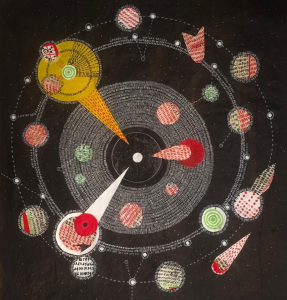 |
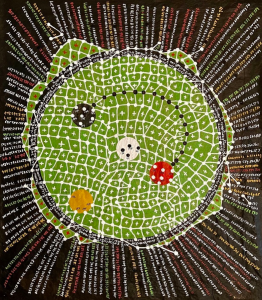 |
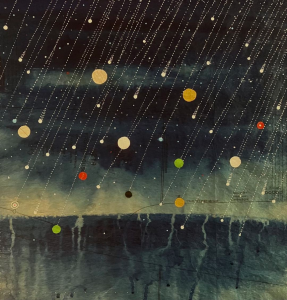 |
It all begins with the base of what makes Drinkwater’s work so unique: the paper he uses. Utilizing old dress patterns — which remind him of old manuscripts — Drinkwater dyes the paper to add texture. On top of that he often collages painted shapes, and moves everything around until his universe is spinning properly. Whether he is setting out with an exact image in mind of what he is making, or waits for new ideas to appear, he takes pleasure in the journey and doesn’t race to finish line.
Very few things are universally agreed upon – or we wouldn’t be arguing about minimalism versus maximalism in art. But one truth that holds up through generations, cultures and time is our desire to look up at the stars and project ourselves into places only imagination can reach. Drinkwater’s mystical maps look beyond what we know to be true and posit places that may or may not exist. They are part science and part fiction, and human enough to spark the desire for discovery. They let any viewer momentarily suspend belief in what is real and — to quote Rothko — “extend myself beyond what I thought was possible.”
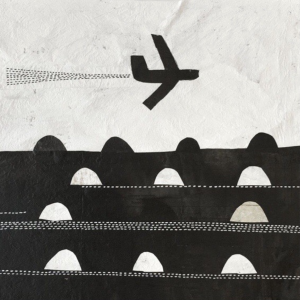 |
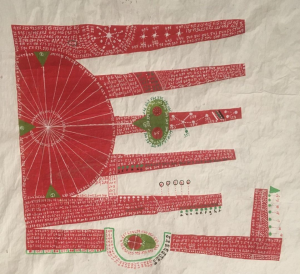 |
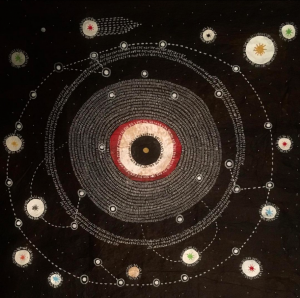 |
Drinkwater currently lives in Queensland, Australia and works as a decorative painter creating customized paint finishes — a trade he took up while working at a 17th Century chateau in Normandy for six years. His work has recently been exhibited at such places as The Painting Center in New York, The Copenhagen Outsider Art Gallery and Boom Gallery in Victoria, Australia.
Find more Shane Drinkwater artwork on Instagram @shane_drinkwater and at pulpholyoke.com/shane-drinkwater ~ Veronica Inberg

